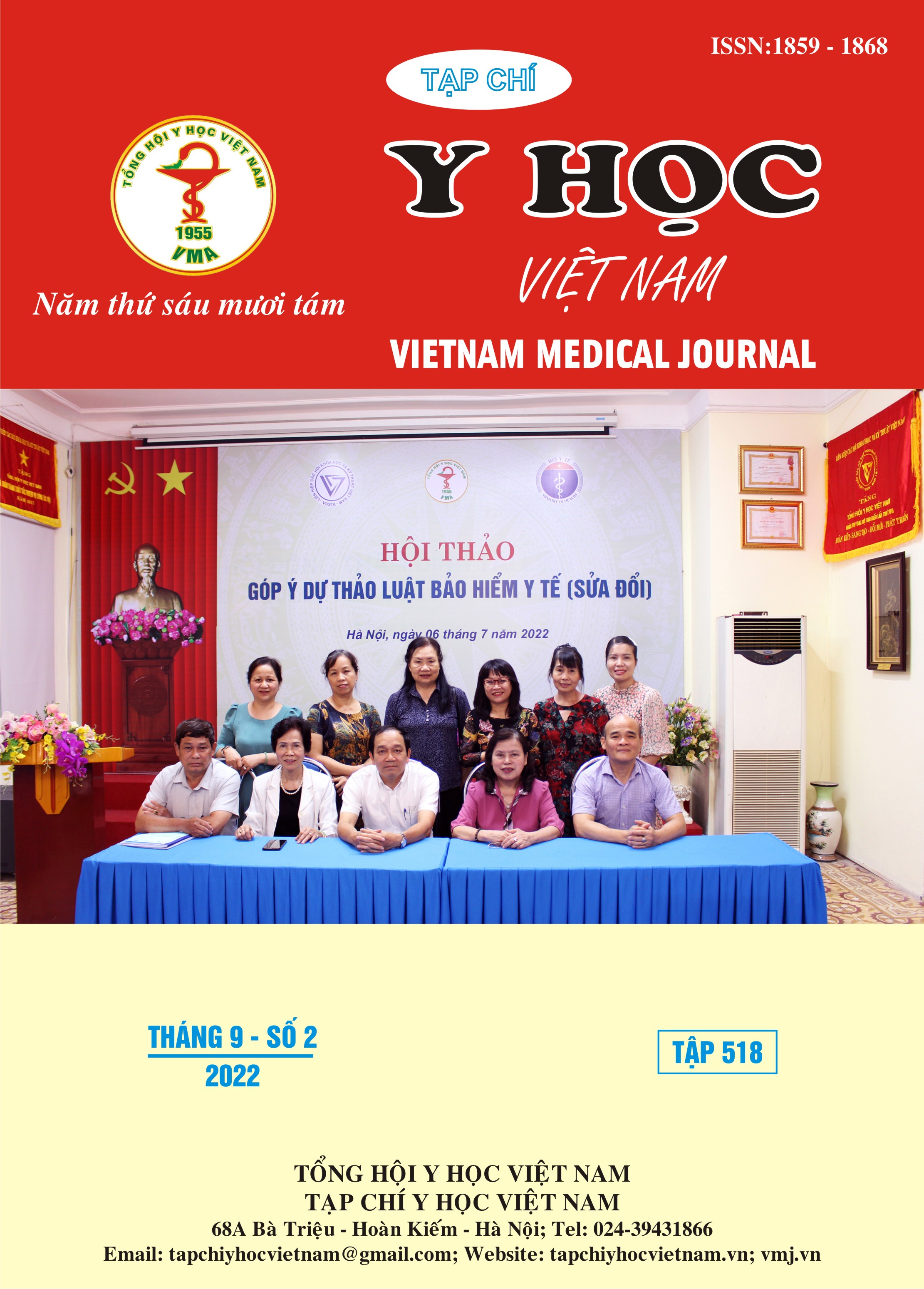INVESTIGATION OF ESCHERICHIA COLI’S β LACTAMASE PRODUCTION BACILLI ISOLATED FROM CAN THO CENTER HOSPITAL
Main Article Content
Abstract
Background: A most important issue of bacterial infections is the actual resistance due to ESBL-producing Gram-negative bacilli. ESBLs are able to hydrolyse all cephalosporins, therefore choosing antibiotics for therapy is difficult Objectives: (1) to determine the rates of Escherichia coli and their species produce ESBL (2) to determine the resistance of Gram-negative bacilli to different antibiotics. Subjects and methods: A cross-sectional descriptive study on 155 Escherichia coli strains collected from clinical specimens of infected patients at Can Tho Central General Hospital from 07/2021 - 05/2022. ESBL was deteted by the combined disk test method and using the phoenix M50 automatic machine. Results: The proportion of Escherichia coli's ESBL production ís 60.7% with the combined plate method and 58,9% with the Phoenix M50 automatic machine. They were also resistant to aminoglycosides, penicillin, and fluoroquinolones, but not Carbapenems. . Conclusion: ESBL-producing Escherichia coli are actually burdensome for chemotherapy for bacterial infections. Prompt hemoculture and antibiogram are needed to find out the ESBL-producing bacteria and using approriate antibiotics..
Article Details
Keywords
Escherichia coli, ESBL, combined disk, Phoenix M50
References
2. Mai Thị Thu Huyền, Nguyễn Đình Duy, Nguyễn Hữu Lân (2018), Các vi khuẩn thường gặp và tính đề kháng kháng sinh của chúng tại Bệnh viện Phạm Ngọc Thạch từ 11/2016 – 11/2017. Tạp chí Y học Thành Phố Hồ Chí Minh, 22(5), tr. 196-200.
3. Huỳnh Thị Hồng Nghĩa (2016), “Nhiễm trùng từ cộng đồng do Enterobacteriaceae tiết men beta-lactamase phổ rộng tại Bệnh viện Bệnh Nhiệt Đới Tp. Hồ Chí Minh”, Tạp chí Y Học Tp.HCM, 20 (1), tr 247-253.
4. Nguyễn thành Tín (2018), Xác định kiểu hình và kiểu gen của vi khuẩn Escherichia coli và Klebsiella pnemoniae tiết ESBL phân lập tại Bệnh viện Đa khoa Bạc Liêu. Tạp chí Y học Thành phố Hồ Chí Minh, số 5, tr. 246-251.
5. Mai Văn Tuấn (2008), “Khảo sát trực khuẩn Gram âm sinh men beta – lactamse phổ rộng phân lập tại Bệnh viện Trung Ương Huế” Tạp chí Y Học Thành Phố Hồ Chí Minh, 19(1), tr. 445-451
6. Đinh Thị Xuân Mai, Đặng Nguyễn Đoan Trang (2020) “Khảo sát tình hình sử dụng kháng sinh và đề kháng kháng sinh tại Bệnh viện Đa khoa khu vực Củ Chi”, Tạp chí y học Thành phố Hồ Chí Minh, 21 (5), tr.227.
7. Buys H., et al (2016), “High Gastrointestial Colonization Rate with Extended-Spectrum β-Lactamase-Producing Enterobacteriaceae in Hospitalzed Patients: Emergence of Carbapenemse-Producing K.pneumoniae in Ethiopia”, Plos One, 11(8), pp 1-14.
8. Chang Y.T., Coombs G., Ling T., et al. (2017), "Epidemiology and trends in the antibiotic susceptibilities of Gram-negative bacilli isolated from patients with intra-abdominal infections in the Asia-Pacific region, 2010-2013". Int J Antimicrob Agents, 49(6), pp. 734-739.
9. Chakraborty A., Adhikari P., Shenoy S. & Saralaya V. (2015), "Clinical significance and phylogenetic background of extended spectrum beta-lactamase producing Escherichia coli isolates from extra-intestinal infections". J Infect Public Health, 8(3), pp. 248-253.


